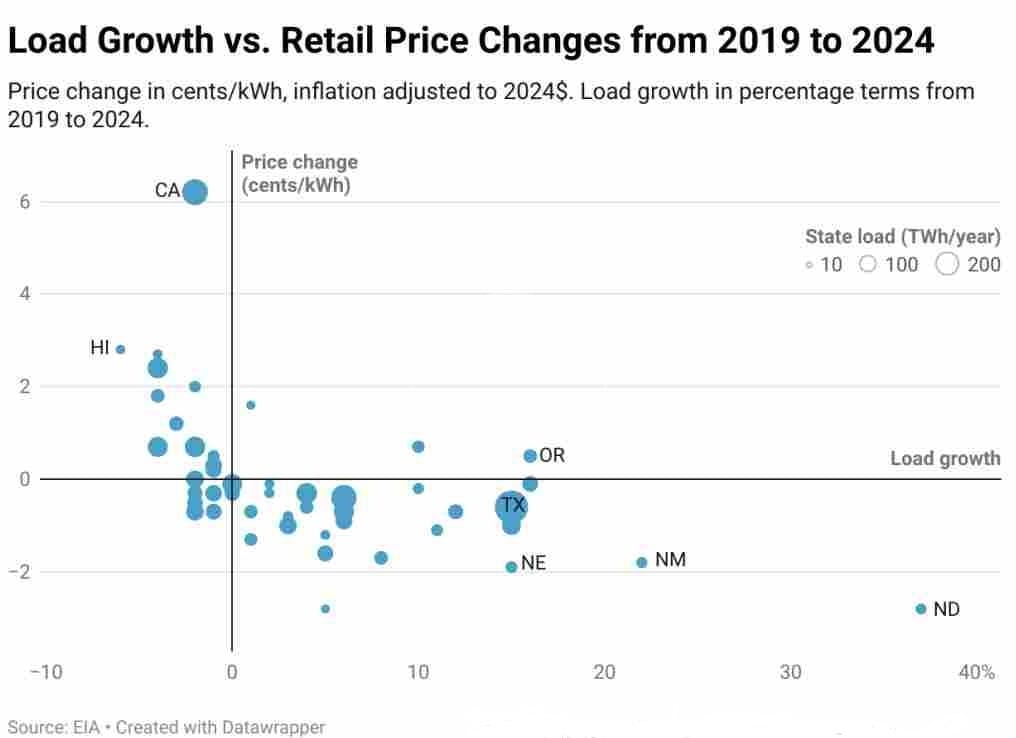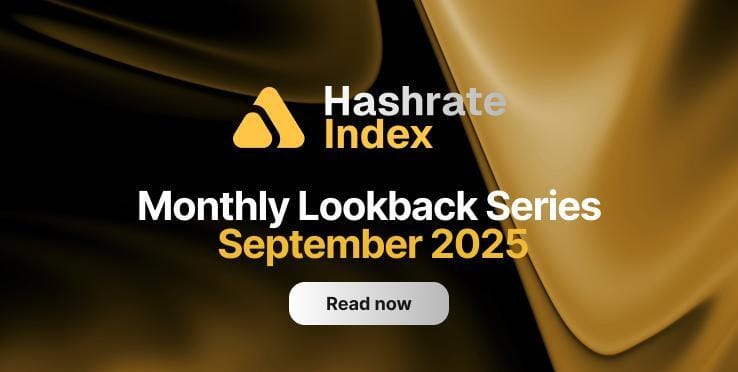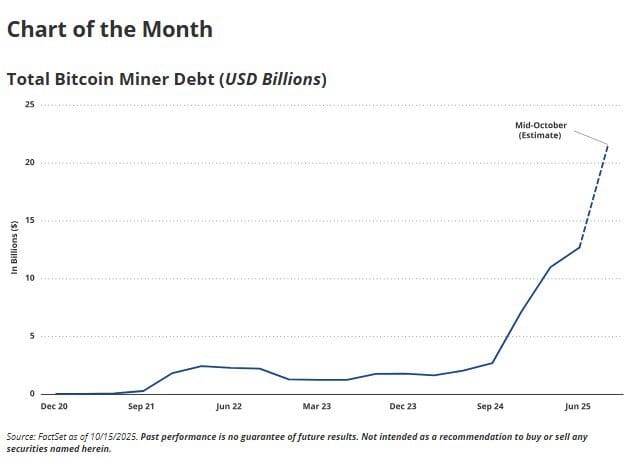- The Blockspace Newsletter
- Posts
- No, Tucker, the CIA didn’t create BTC
No, Tucker, the CIA didn’t create BTC
Not this conspiracy again...


Happy Friday!
A clip of conservative darling Tucker Carlson went viral on Bitcoin twitter this week. And no, the clip was not Carlson chirping about the deep state, or even saying something positive about Bitcoin.
Rather, the former Fox News anchor said he thinks it’s “obvious” the CIA created Bitcoin, that’s a “no thanks!’ from him.
So for today’s newsletter, a note on one of the most beaten-over conspiracies in Bitcoin, plus a new report that proves something bitcoin miners have been saying for a long time.
Plus, headlines you missed this week!
Tucker Carlson suggests the CIA created Bitcoin, still calls it “the future”
During a Turning Point USA talk, Conservative commentator Tucker Carlson claimed that the Central Intelligence Agency is the most likely creator of Bitcoin, declaring “obviously it was the CIA, we all know that.” He nonetheless argued that Bitcoin’s potential for financial sovereignty remains undiminished and said he’d invest heavily if adoption and privacy hurdles were cleared. - link
OUR TAKE: Could the super shadowy coders that run Bitcoin actually be the CIA?
Popular conspiracies suggest perhaps the NSA created Bitcoin 16 years ago, but here’s why the theory persists:
In 1996 the National Security Agency (NSA) published a paper titled “How to Make a Mint: The Cryptography of Anonymous Electronic Cash” which describes a form of anonymous digital cash.
That report shows that state cryptographers were thinking about electronic cash decades before Bitcoin’s 2008 whitepaper.
But the contents of the paper make a big difference: the systems discussed were clearly centralized (involving a “bank” or trusted mint) and lacked the trustless, decentralized ledger architecture that Bitcoin introduced.
Castle Island Ventures Founding Partner Nic Carter posits that Bitcoin could have been born from these efforts – that one of the researchers went rogue with what they learned, solved the centralization issue with proof-of-work, and launched Bitcoin.
He calls this the “Lab Leak Hypothesis.”
“I think it was a shuttered internal R&D project which one researcher thought was too good to lay fallow on the shelf and chose to secretly release,” Carter argues.
Here are some of the reasons I remain skeptical:
No credible whistle-blowers or leaked internal memos pointing to direct CIA/NSA development of Bitcoin. Extraordinary claims demand extraordinary evidence.
The NSA paper lacks the proof-of-work, peer-to-peer propagation, and longest-chain consensus.
If a CIA/NSA project of that magnitude existed, the massive scale of Bitcoin’s adoption, the billions of dollars of capital and infrastructure built on it, and the global surveillance focus on the network make a total cover-up very unlikely.
That said, the theory is not completely worthless. It serves as a useful reminder that, while the genesis of Bitcoin remains opaque, the ability to audit the code is what allows us to trust Bitcoin.
That doesn’t mean the state can’t capture Bitcoin after the fact, but that’s for another newsletter.
-CBS
New report shows that increased data center loads improved state power costs
A recent report from the U.S. Department of Energy’s Lawrence Berkeley National Laboratory reveals U.S. states that added more MW load between 2019 and 2024 saw power prices drop on an inflation-adjusted basis. These states also saw the least dramatic increases to power prices over the period on a nominal basis. - link

Chart Source: LBNL
OUR TAKE: Bitcoin miners vindicated once again.
As if the incessant squawking about bitcoin boiling oceans wasn’t enough, Bitcoiners have fielded ignorant takes about bitcoin mines hiking energy rates, particularly in the U.S. once the mining industry took center stage here after the China ban.
Miners and their allies have long argued that miners contribute to grid and price stability, both by powering down during supply crunches and by providing energy / grid operators a steady, mass buyer of electrons.
When these big buyers enter power markets, they allow power producers to monetize more megawatts, which drives down costs and ensures more stable price levels for the rest of the market.
This is clear in states like North Dakota, Nebraska, and Texas, the report notes, which have seen spectacular load growth from bitcoin mining and data centers since 2019 but which have all seen lower inflation-adjusted power prices.
Now, as some commentators have noted, when even more load goes to AI data centers – which are much less price sensitive than bitcoin miners and likely won’t curtail as readily – this trend may falter.
There’s an argument to be made that these data centers could arguably add more price stability since they will be even better buyers of energy than miners – but they are also willing to bid more than anyone else on the market, so prices could rise accordingly.
At the very least, if AI data centers do raise prices, miners have a U.S. Department of Energy research paper that they can point to and say, “look pal, it’s not our fault.”
-CMH
Like these stories? Reply BITCOIN to let us know!

Monthly Lookback Series: September 2025
This month’s report breaks down hashrate and hashprice trends, forward market participation, trading activity and contract performance.
In the News
Join our Telegram chat to get the latest headline in Bitcoin-related equities.
Google Claims Quantum Breakthrough
Google announced that it’s Quantum AI team has executed a verifiable quantum algorithm outperforming the world’s fastest supercomputers by 13,000x. The company says this achievement builds on it’s 2019 “quantum supremacy” result, although critics say that there should be question over the purpose-made algorithm which benchmarks the test. - link
Analysis reveals North Korea has already stolen over $2 billion in crypto in 2025
Elliptic reports that hackers linked to North Korea have already filched over $2 billion in crypto-assets in 2025, marking a new annual record and pushing the regime’s cumulative crypto thefts beyond $6 billion. Much of the illicit activity reportedly uses advanced laundering techniques: cross-chain bridges, mixing services, and obscure blockchains. - link
Trump pardons Binance founder Changpeng Zhao
President Donald Trump has unconditionally pardoned Binance Founder and former CEO Changpeng “CZ” Zhao. CZ was previously sentenced to 4 months in US prison for money-laundering violations. - link
Jane Street discloses 5.4% ownership in Bitfarms and 5% ownership in Cipher
Jane Street filed two Schedule 13G’s on October 23, revealing sizable positions in bothBitfarms (BITF) and Cipher Mining (CIFR). The Bitfarms filing showed 29,920,704 shares of BITF, representing 5.4% of the company’s outstanding stock. Jane Street also disclosed a 5.0% stake in CIFR, totaling 19,682,871 shares - link
Chart of the Week
Per VanEck shared by Mathew Sigel, bitcoin miners have a record $20+ billion in outstanding debt as of October 15, 2025. Most of this debt comes in the form of convertible notes raised for AI/HPC pivots.
Blockspace Podcasts
For this week’s Mining Pod news roundup, we dive into TeraWulf’s $3.2B secured note for AI infrastructure—the largest ever for a public miner – and Bitfarms’ $588M convertible note at a time when total industry debt crosses $20+ billion, why data center companies are salvaging jet turbines to power data centers, CleanSpark’s SVP of AI Data Centers hire, and for this week’s cry corner, pour one out for the Kadena blockchain…

Starting in the 1800s, brewers in the United States began crafting what would be known as cream ale, a dry beer that was distinctly American in flavor and style. Prohibition would eventually chase the tradition out of America, where Canadian brewers would adopt it before the style made its way back to the U.S. with Prohibition’s repeal. Cream ales resemble the pale ales that would seize the imagination of the craft beer scene in the U.S. some 70 years after Prohibition, and fittingly, cream ales have also seen a revival under the craft beer revolution.
-CMH & CBS
Enjoyed today's read?Tell us if you liked the newsletter by clicking on one of the answers below! |


Reply